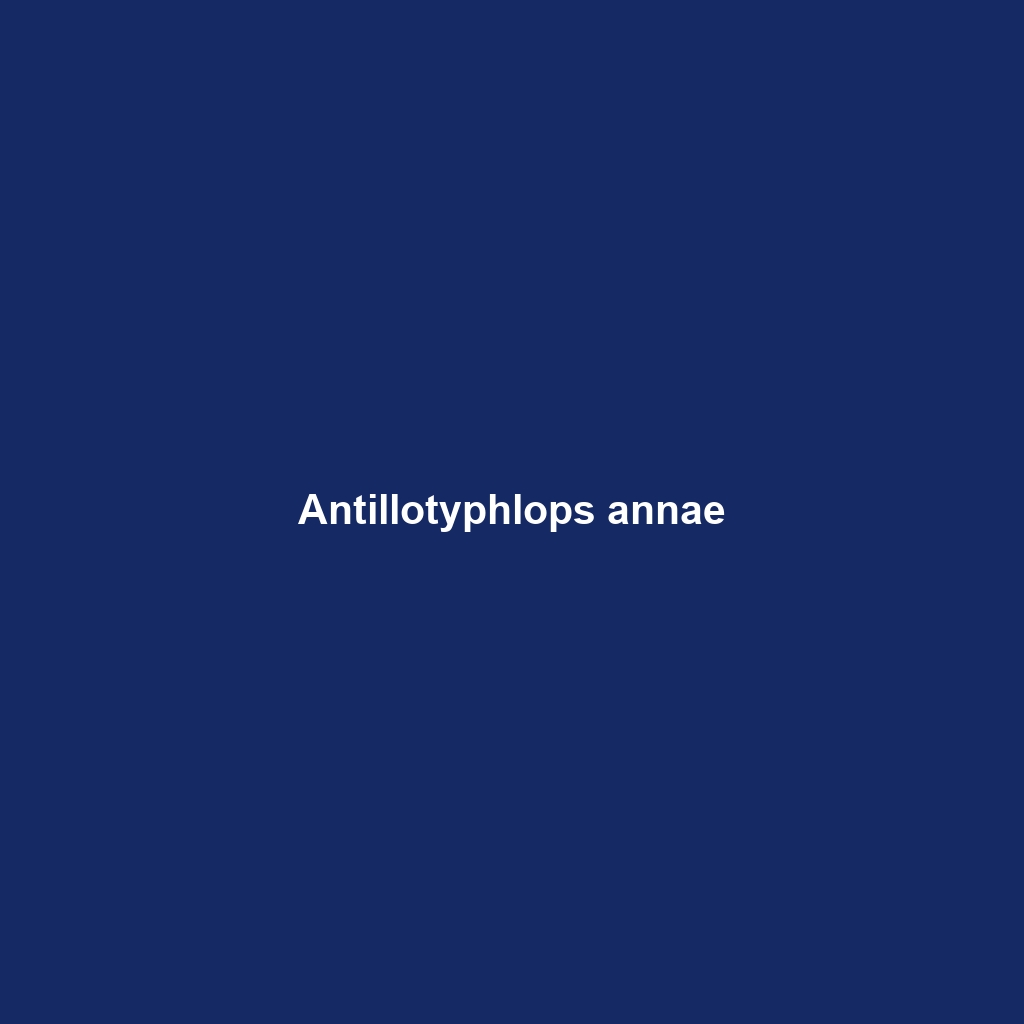Species Description of Antillotyphlops annae
Common Name: Antillotyphlops annae
Scientific Name: Antillotyphlops annae
Habitat
Antillotyphlops annae is primarily found in the Caribbean region, specifically on the islands of Puerto Rico and Saint Kitts. This blind snake inhabits moist tropical environments, often residing in areas rich in leaf litter and soil, which provide them with necessary cover and a suitable microhabitat. The species typically prefers lowland forests and agricultural lands where they can find ample hiding spots among roots and decaying organic material.
Physical Characteristics
This species of snake is relatively small in size, averaging between 25 to 30 centimeters in length. The body is cylindrical and lacks limbs, characteristic of the Typhlopidae family. The coloration is generally a light brown to tan, facilitating camouflage against the earthy substrate. Notable features include its smooth, shiny scales and a pointed snout, which aid in burrowing through the soil.
Behavior
Antillotyphlops annae exhibits a primarily fossorial lifestyle, spending most of its time underground. This species is known for its secretive nature and limited activity during daylight hours, which helps avoid potential predators. Their movement involves a series of burrowing and lateral undulations, allowing them to navigate through the soil effectively. They are solitary animals, typically only coming together during the breeding season.
Diet
The diet of Antillotyphlops annae consists mainly of small invertebrates, particularly ants and termites. They use their acute sense of smell to detect these prey within the soil. Their feeding habits contribute to the regulation of insect populations, making them an important component of their ecosystem.
Reproduction
The reproductive habits of Antillotyphlops annae include oviparity, where females lay eggs during the warmer months. The breeding season usually occurs from late spring to early summer. Females typically lay between two to six eggs per clutch, which incubate in the soil until hatching. Young snakes resemble adults in morphology and behavior but are much smaller at birth.
Conservation Status
Currently, Antillotyphlops annae is classified as “Least Concern” by the IUCN Red List. However, habitat destruction and pollution pose potential threats to their populations. Conservation efforts are important to ensure that their unique habitats are preserved for future generations.
Interesting Facts
One interesting fact about Antillotyphlops annae is its ability to survive in diverse habitats, including urban areas, where it continues to thrive despite environmental changes. Additionally, their lack of vision has led to fascinating adaptations, allowing them to rely heavily on other sensory modalities to navigate their surroundings.
Role in Ecosystem
Antillotyphlops annae plays a crucial role in its ecosystem as a predator of social insects like ants and termites. By controlling these populations, they help maintain ecological balance within their habitats. Moreover, as prey for larger predators, they also contribute to the food web, further emphasizing their importance in the ecosystem.
